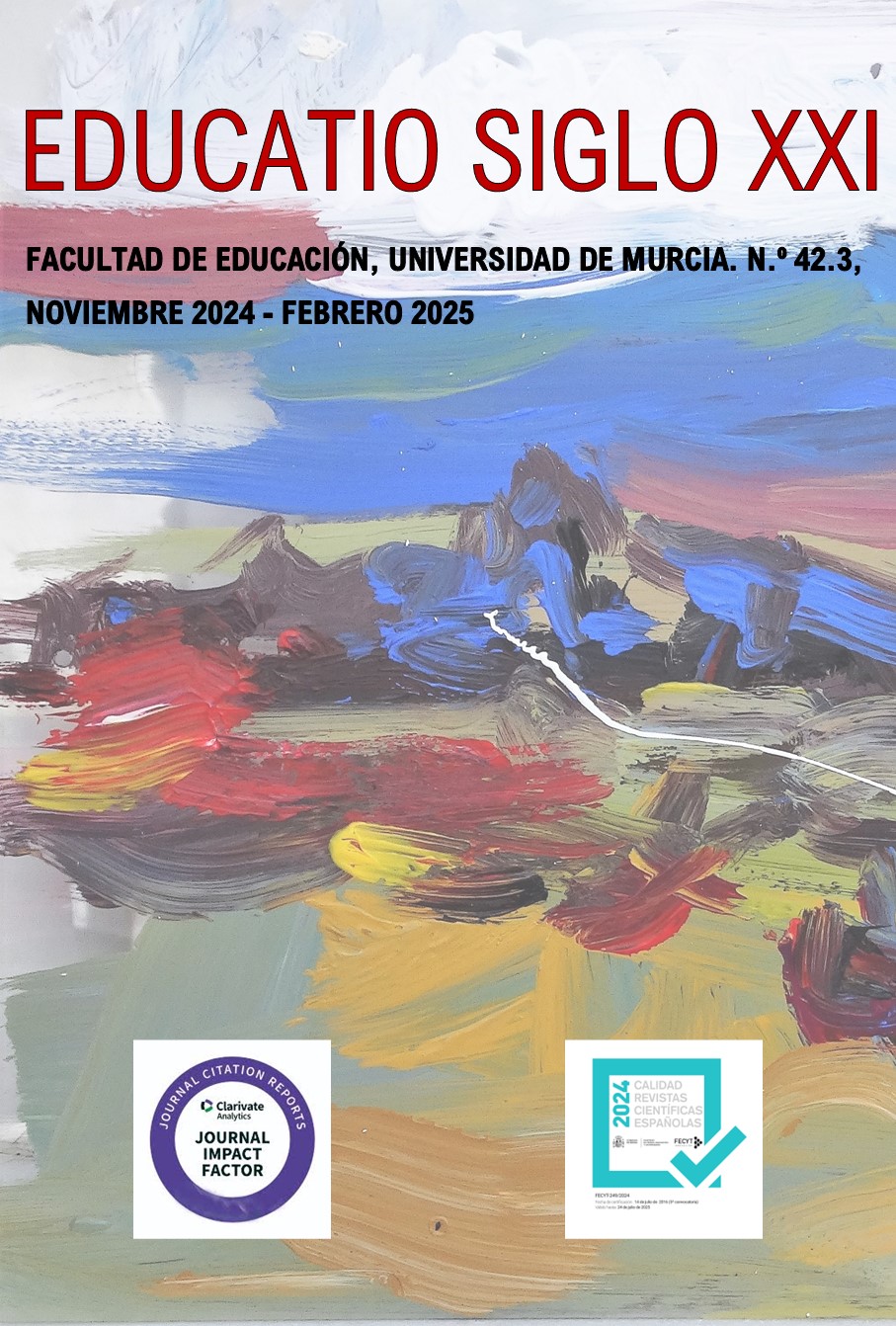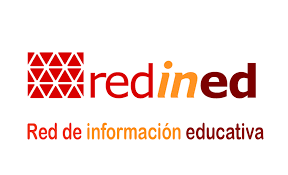Artificial Intelligence in the music classroom. Experience and perception of specialist teachers in Secondary Education
Abstract
Nowadays classroom practice is heavily influenced by an increase in resources linked to Artificial Intelligence (AI), and music education is no exception. Teachers still find difficulties in achieving a balance between content and skills, but, without a doubt, the practical opportunities offered by AI in Secondary Education are motivating for students. The objectives of this investigation are to analyze the experience of teachers in AI, quantify the skills learned by students, and examine the training needs that allow for the didactic use of AI. The focus of this study was on the perception of specialist teachers of music in relation to the resources and utilities of AI. The study was carried out in the Autonomous Community of Madrid, with a random sample of 301 participants, all of them teachers in Secondary Education schools. A mixed, qualitative and quantitative, questionnaire was employed to gather data. Results revealed that almost 40% of the teachers had been in contact with AI tools, around 30% had received training, and, when asked about their knowledge of the educational legislation, 91% highlighted they did not know how AI was articulated legislatively. Regarding teachers’ demands in relation to AI, the most common ones referred to software management (60%), classroom resources (19%), and group dynamics (10%). More than 94% considered that it is necessary to increase training in resources linked to AI.
Downloads
-
Abstract1671
-
PDF (Español (España))693
References
Alvarado-Rojas, M.E. (2015). Una mirada a la inteligencia artificial. Revista de Ingeniería, Matemáticas y Ciencias de la Información, 2(3), 27-31. http://ojs.urepublicana.edu.co/index.php/ingenieria/article/view/234/213
Biel, L.A., & Álvarez, E. (2019). La competencia digital docente del profesor universitario 3.0. Caracteres: estudios culturales y críticos de la esfera digital, 8(2), 205-236. Delirio.
Caruso, A. L., y Cavalheiro, S. A. (2021). Integração Entre Pensamento Computacional e Inteligência Artificial: Uma revisão sistemática de literatura. Anais Do XXXII Simpósio Brasileiro de Informática Na Educação (SBIE 2021). https://doi.org/10.5753/sbie.2021.218125
Castañeda, L., Esteve, F., y Adell, J. (2018). ¿Por qué es necesario repensar la competencia docente para el mundo digital? Revista de Educación a Distancia, 56, 1-20. https://doi.org/10.6018/red/56/6
Chao-Fernández, R.; Felpeto-Guerrero, A. & Vázquez-Sánchez, R. (2020). Diseño y puesta en funcionamiento de la “escalera musical” como medio saludable de relacionar áreas de conocimiento. En E. De la Torre Fernández (Ed.), Contextos universitarios transformadores: Boas prácticas no marco dos GID. IV Xornadas de Innovación Docente. Cufie, pp. 43-56. Universidad de da Coruña. https://doi.org/10.17979/spudc.9788497497756.043
Colás-Bravo, P., Conde-Jiménez, J., & Reyes-de-Cózar, S. (2019). The development of the digital teaching competence from a sociocultural approach. Comunicar, 27(61), 21–32. Retrieved from https://www.revistacomunicar.com/ojs/index.php/comunicar/article/view/C61-2019-02
Copet, J., Kreuk, F., Gat, I., Remez, T., Kant, D., Synnaeve, G., Adi, Y., y Défossez, A. (2023). Simple and Controllable Music Generation. Cornell University. https://doi.org/10.48550/arXiv.2306.05284
Cuervo, L., Bonastre, C., & García, D. (2022). Tecnología digital en la educación musical infantil. Praxis & Saber, 13(32). https://doi.org/10.19053/22160159.v13.n32.2022.13201
Dammers, R. J. (2019). The role of technology in music teacher education. En: Conway, Colleen; Pellegrino, Kristen; Santaley, Ann Marie; West, Chad (Eds.). The Oxford handbook of preservice music teacher education in the United States. Oxford University Press, 2019, pp. 365-376.
Datos Abiertos Comunidad de Madrid. (2024). Conjuntos de datos-Datos abiertos. Consejería de Educación, Ciencia y Universidades. https://shre.ink/Dezo
Del Barrio-Aranda, L., García-Gil, D. y Cuervo-Calvo, L. (2022). La creatividad musical en el currículo de Educación Primaria en España y sus implicaciones educativas. Revista Electrónica de LEEME, 50, 67-92. https://doi.org/10.7203/LEEME.50.24120
Dúo, P, Moreno, A.J., López, J. y Marín, J. A. (2023). Inteligencia Artificial y Machine Learning como recurso educativo desde la perspectiva de docentes en distintas etapas educativas no universitarias. RiiTERevista interuniversitaria de investigación en tecnología educativa, 15, 58-78. https://doi.org/10.6018/riite.579611
Espinoza, E. E., y Calva, D. X. (2020). La ética en las investigaciones educativas. Revista Universidad y Sociedad, 12(4), 333-340.
European Commission. (2018). ESCO Handbook: European skills, competences, qualifications and occupations. https://ec.europa.eu/social/main.jsp?catId=738&langId=en&pubId=8083&furtherPubs=yes
Ferm, C., Johansen, G. y Juntunen, M.L. (2016). Las visiones de los formadores de profesores de música sobre la preparación de profesores de música en Finlandia, Noruega y Suecia. Revista Internacional de Educación Musical, 34(1), 49–63. https://doi.org/10.1177/0255761415584300
Giráldez, A. (2015). De los ordenadores a los dispositivos móviles: Propuestas de creación musical y audiovisual. Graó.
Jiménez-Bohmer, N.A. (2022). Separación de fuentes de audio con Deep Learning para la interacción humano-robot. (Tesis Pregrado, Universidad de Chile). https://repositorio.uchile.cl/handle/2250/185603
Liu, F., y Kromer, P. (2020). Early age education on Artificial Intelligence: Methods and tools. Advances in Intelligent Systems and Computing, 696–706. https://doi.org/10.1007/978-3-030-50097-9_71
Muntaner-Guasp, J.J., Mut-Amengual, B. y Pinya-Medina, C. (2022). Active Methodology for the Implementation of Inclusive Education. Revista Electrónica Educare (Educare Electronic Journal), 26(2), 1-21. https://doi.org/10.15359/ree.26-2.5
My sheet music transcription. (2022). MuseScore vs Finale vs Sibelius. https://www.mysheetmusictranscriptions.com/musescore-vs-finale-vs-sibelius
Peñaherrera, W., Cunuhay, W., Nata, D. y Moreira, L. (2022). Implementación de la Inte-ligencia Artificial (IA) como recurso educativo. Recimundo, 6(2), 402-413. https://doi.org/10.26820/recimundo/6.(2).abr.2022.402-413
Pozo, J.I., Torrado, J.A. y Pérez, M.P. (2020). Aprendiendo a interpretar música por medio del Smartphone: la explicitación y reconstrucción de las representaciones encarnadas. Cuaderno del Centro de Estudios en Diseño y Comunicación. Ensayos, 89, 237-260. http://dx.doi.org/10.18682/cdc.vi89.3811
Redecker, C. (2017). European framework for the Digital Competence of Educators: DigCompEdu. Publications Office of the European Union. https://doi.org/10.2760/159770
Rodrigo-Segura, F. e Ibarra-Rius, N. (2022). Educación literaria y competencia digital mediante metodologías activas para la formación de los futuros docentes. Educatio Siglo XXI, 40(3), 37-60. https://doi.org/10.6018/educatio.486381
Rouhiainen, L. (2018). Inteligencia Artificial. 101 cosas que debes saber hoy sobre nuestro futuro. Alienta Editorial.
Tejada, J. y Pozos, K. V. (2018). Nuevos escenarios y competencias digitales docentes: hacia la profesionalización docente con TIC. Profesorado, Revista de Currículum y Formación del Profesorado, 22(1), 25-51. https://recyt.fecyt.es/index.php/profesorado/article/view/63620/
Torrado, J. A., Pérez Echeverría, M. P. y Pozo, J. I. (2020). Aprendiendo música por medio de las TIC. En: J.I. Pozo; M. P. Pérez Echeverría; J.A. Torrado; G. López-Íñiguez (Coords.). Aprender y enseñar música: Un enfoque centrado en los alumnos. Morata, pp. 291-305.
UNESCO. (2018). ICT competency framework for teachers. https://unesdoc.unesco.org/ark:/48223/pf0000265721
UNESCO. (2019). Marco de competencias de los docentes en materia de TIC. https://unesdoc.unesco.org/ark:/48223/pf0000371024.locale=es
Unión Europea (2023). Proposal for a Regulation laying down harmonised rules on artificial intelligence. https://shre.ink/DM1C
Valencia-Tafur, A.T. y Figueroa-Molina, R. (2023). Incidencia de la Inteligencia Artifi-cial en la Educación. Educatio Siglo XXI, 41(3), 235-264. https://doi.org/10.6018/educatio.555681
Verdú-Pina, M., Lázaro-Cantabrana, J. L., Grimalt-Álvaro, C. y Usart, M. (2023). El concepto de competencia digital docente: revisión de la literatura. Revista Electrónica de Investigación Educativa, 25, e11, 1-13. https://doi.org/10.24320/redie.2023.25.e11.4586
Vivar, J. M. F., y Peñalvo, F. J. G. (2023). Reflexiones sobre la ética, potencialidades y retos de la Inteligencia Artificial en el marco de la Educación de Calidad (ODS4). Comunicar, 74, 37-47. https://doi.org/10.3916/C74-2023-03
Wan, W. (2022). Digital Technologies in Music Education: The Case of Chinese Students. Revista Música Hodie, 22. https://doi.org/10.5216/mh.v22.70752
Wanckhede, C. (2024). What is MusicFX? We put Google's AI text-to-music generator to the test. General Technology. https://www.androidauthority.com/what-is-google-musiclm-3333829/
Copyright (c) 2024 Servicio de Publicaciones de la Universidad de Murcia

This work is licensed under a Creative Commons Attribution-NonCommercial-NoDerivatives 4.0 International License.
Original work publishes in this journal is subject to the following terms:
1. Murcia University Press (the publishing house) holds the copyright of the publishes work, and favours and allows their reutilization under the use license stated in point 2.
© Servicio de Publicaciones, Universidad de Murcia, 2015
2. Work is published in the electronic edition under a license (Creative Commons Reconocimiento-NoComercial-SinObraDerivada 4.0 España (legal text). They can be copied, used, disseminated, transmitted and publicly presented, as long as: i) authorship and original publication source is acknowledged (journal, publishing house and URL of the work); ii) are not used for commercial purposes; iii) the existence and specifications of this use license is stated.
3. Conditions for self-archive. Authors are allowed and encouraged to disseminate electronically the pre-pint (before review) and/or post-print (accepted for publication) versions of their work before their publication since that favours earlier circulation and dissemination resulting in an increased chance for the authors to be cited and for the work to reach a bigger share of the academic community. Colour: RoMEO: green.








